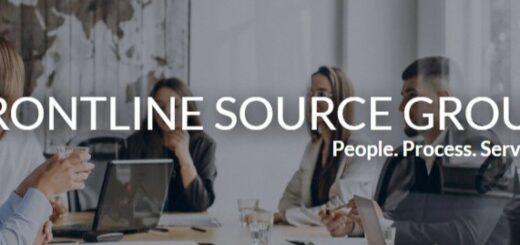New How to Be Bias-Free Hiring: Building Leadership Teams
The Value of Inclusionary Hiring in Leadership Teams In the quickly changing business environment of today, it is impossible to overestimate the importance of inclusive hiring practices, particularly in leadership teams. I now see that having diverse leadership is not only the right thing to do, but also advantageous from a business standpoint. Prioritizing inclusivity in hiring procedures allows businesses to access a multitude of viewpoints and concepts that can spur innovation and expansion. A leadership team with a range of experiences, backgrounds, and perspectives is better able to comprehend and meet the needs of a wide range of clients. This variety encourages innovation and problem-solving, which eventually improves organizational performance and decision-making. Also, hiring procedures that are free of bias support a positive workplace culture. We are currently hiring for various positions in our company.
Key Takeaways
- Bias-free hiring in leadership teams is crucial for creating a diverse and inclusive work environment.
- Implementing strategies such as blind resume reviews and structured interviews can help eliminate biases in the hiring process.
- Unconscious biases can be identified and eliminated through training and education for hiring managers.
- Diversity and inclusion play a key role in building a merit-based leadership team that reflects a variety of perspectives and experiences.
- Leveraging technology, such as AI-powered tools, can help ensure fair and impartial hiring decisions by removing human biases from the process.
Employee loyalty & morale are increased when they perceive that their company values justice & equity. Teams led by people chosen through impartial procedures, in my experience, are typically more motivated and involved. They are more productive & have lower turnover rates because they feel heard and understood. In summary, the significance of hiring without bias goes beyond the obvious advantages of diversity; it establishes the groundwork for a flourishing corporate culture that draws in top talent & keeps valuable staff members. Methods for Putting Bias-Free Hiring Practices into Practice Putting bias-free hiring practices into practice calls for a multipronged strategy that starts with leadership commitment.
To find potential biases, I think companies should first evaluate their current hiring procedures. Examining job descriptions for wording that might unintentionally favor one group over another or examining the makeup of applicant pools to guarantee diversity are two ways to achieve this. By doing these first actions, I can establish a starting point from which to gauge my progress and decide what adjustments are required.
Establishing uniformity in the interview procedure is another successful tactic. In my experience, the impact of unconscious biases can be considerably lessened by employing structured interviews, in which every applicant is asked the same set of preset questions. This method permits more objective comparisons between applicants in addition to guaranteeing that all candidates are assessed using the same standards. Also, using a diverse panel of interviewers can help reduce individual biases and offer a range of viewpoints.
By putting these tactics into practice, I can create a setting where meritocracy rules and applicants are assessed on the basis of their abilities and potential rather than assumptions. Recognizing and Removing Unconscious Biases in the Hiring Process Unconscious biases can appear in a variety of ways during the hiring process and are frequently deeply embedded. I now know that identifying these biases is the first step to getting rid of them. Conducting bias training sessions for all hiring process participants is one efficient strategy. These seminars can aid in bringing attention to prevalent biases, like affinity bias, which occurs when people give preference to candidates with comparable backgrounds or passions.
I can actively work to combat these tendencies by being aware of them. Using blind recruitment techniques is another strategy that I have found to be effective. During the preliminary screening phase, this entails eliminating identifying information from resumes and applications, such as names or addresses.
By concentrating only on credentials and experience, I can lessen the influence of prejudices based on socioeconomic status, gender, or ethnicity. Also, it can be beneficial to use software tools that analyze job description language to make sure that the wording is inclusive and appealing to a wide range of applicants. Through proactive efforts to detect and eradicate implicit prejudices, I can establish a fairer recruitment procedure that gives precedence to qualifications rather than assumptions. Building a Merit-Based Leadership Team: The Significance of Diversity and Inclusion Diversity and inclusion are essential elements in creating a leadership team that is based on merit.
I now realize that diversity includes age, sexual orientation, disability status, & other aspects of identity in addition to race and gender. Organizations foster an atmosphere where everyone’s opinions are respected & heard when they adopt this more expansive definition of diversity. Being inclusive encourages teamwork & creativity because it gives members the confidence to express their distinct viewpoints without worrying about criticism. According to my observations, companies that place a high priority on diversity & inclusion typically draw in a larger pool of talent.
A growing number of candidates are looking for companies that share their values and provide chances for development & promotion. Developing an inclusive culture will help me establish my company as a top employer, which will improve hiring results. Moreover, diverse leadership teams are better at handling difficult situations and coming to well-informed conclusions that appeal to a wide range of clients. In this sense, diversity & inclusion are not only moral issues; they are also necessary to create successful leadership teams that propel an organization forward. In a time when technology is essential to almost every facet of business, I have discovered that using technology to ensure fair & impartial hiring decisions can greatly improve bias-free hiring procedures.
Numerous software programs are made to reduce bias and expedite the hiring process. Applicant tracking systems (ATS), for example, can assist in screening resumes according to objective standards as opposed to personal opinions. By automating some hiring-process steps, I can lessen the possibility that bias or human error will affect choices. Also, candidate data can be analyzed by artificial intelligence (AI) tools to find patterns & trends that human recruiters might not notice right away. In addition to ensuring that decisions are made on the basis of merit rather than unconscious biases, these insights can help guide hiring strategies.
But if AI systems are trained on biased data sets, it is important to be aware that they could reinforce preexisting biases. In order to make sure that my use of technology is consistent with my dedication to impartial and equitable hiring practices, I must constantly assess it. Bias-Free Hiring Practices Training & Education for Hiring Managers Establishing a culture of bias-free hiring within an organization requires both training & education. In my opinion, establishing an equitable hiring process requires giving hiring managers the information and abilities they need to identify & address biases.
Workshops aimed at raising awareness of unconscious bias can offer useful insights into how biases appear in judgments as well as workable solutions to lessen their effects. Also, continuing education is essential to sustaining the momentum of hiring practices free from bias. I’ve discovered that hiring managers can benefit from frequent refresher training or conversations about best practices. I can make sure that my company stays dedicated to promoting diversity and inclusion during the hiring process by establishing an atmosphere that values lifelong learning.
Measuring the Effectiveness of Bias-Free Hiring Initiatives in Leadership Teams: Determining precise success metrics is crucial to fully comprehending the efficacy of bias-free hiring initiatives. I’ve discovered that monitoring diversity-related key performance indicators (KPIs) can give important information about how well these programs are working. One way to gauge whether efforts are producing noticeable results is to look at the proportion of diverse applicants who were interviewed or hired. Qualitative information on how employees feel about the hiring process can also be obtained by holding frequent surveys or feedback sessions with them. Future plans for strengthening bias-free hiring procedures can be informed by this feedback, which can also point out areas for improvement. My organization can continue to be held accountable for its dedication to diversity & inclusion in leadership teams if I continuously measure success using both quantitative and qualitative methods.
The Future of Bias-Free Hiring: Trends & Best Practices for Creating Merit-Based Leadership Teams As I consider the future of bias-free hiring, a number of trends are starting to emerge that will influence best practices in this field. The growing emphasis on openness in hiring procedures is one noteworthy trend. Job seekers are growing increasingly picky about where they apply for positions, looking for companies that exhibit a dedication to equity and justice. By being transparent about my hiring procedures & diversity objectives, I can gain the trust of prospective employees and improve my company’s standing as an inclusive employer.
The expanding use of data analytics in hiring is another trend. With the growing dependence of organizations on data-driven decision-making, I believe that using analytics to detect biases in hiring procedures will become commonplace. Through the examination of candidate demographics, interview results, & retention rates, I can acquire important knowledge about how well my company is accomplishing its diversity objectives. In summary, using hiring procedures free from bias is crucial to creating leadership teams that are representative of the diverse society in which we live.
I may help create a more equal workplace where merit takes precedence over bias by putting strategies in place to recognize and eradicate biases, encouraging a culture of diversity & inclusion, utilizing technology, training hiring managers, tracking success, and keeping up with new developments. Although achieving bias-free hiring may be difficult, firms hoping to succeed in the long run in the current competitive environment will surely find the effort worthwhile.
In a related article on Frontline Source Group’s CEO Blog, “CEO Undercover: Uber Project,” the importance of unbiased hiring practices is highlighted as a key factor in building successful leadership teams. The article discusses the challenges faced by companies like Uber in ensuring that their hiring processes are fair and free from bias. By focusing on pure merit and qualifications, organizations can create diverse and effective teams that drive innovation and success. To read more about this topic, visit here.
FAQs
What is bias-free hiring?
Bias-free hiring refers to the practice of making hiring decisions based solely on an individual’s qualifications, skills, and experience, without being influenced by any form of bias, such as gender, race, age, or other personal characteristics.
Why is bias-free hiring important?
Bias-free hiring is important because it ensures that the best candidates are selected for a job based on their merit, rather than on factors that are unrelated to their ability to perform the job. This leads to a more diverse and inclusive workforce and can improve overall company performance.
How can bias-free hiring be achieved?
Bias-free hiring can be achieved by implementing structured and standardized hiring processes, using objective criteria to evaluate candidates, providing unconscious bias training to hiring managers, and utilizing technology to anonymize candidate information during the initial screening process.
What are the benefits of bias-free hiring?
The benefits of bias-free hiring include a more diverse and inclusive workforce, improved employee morale and retention, better decision-making and problem-solving, and a positive impact on the company’s reputation and bottom line.
What are some common biases in the hiring process?
Common biases in the hiring process include affinity bias (favoring candidates who are similar to oneself), confirmation bias (seeking out information that confirms preconceived notions), and halo effect (allowing one positive trait to overshadow other important factors).




